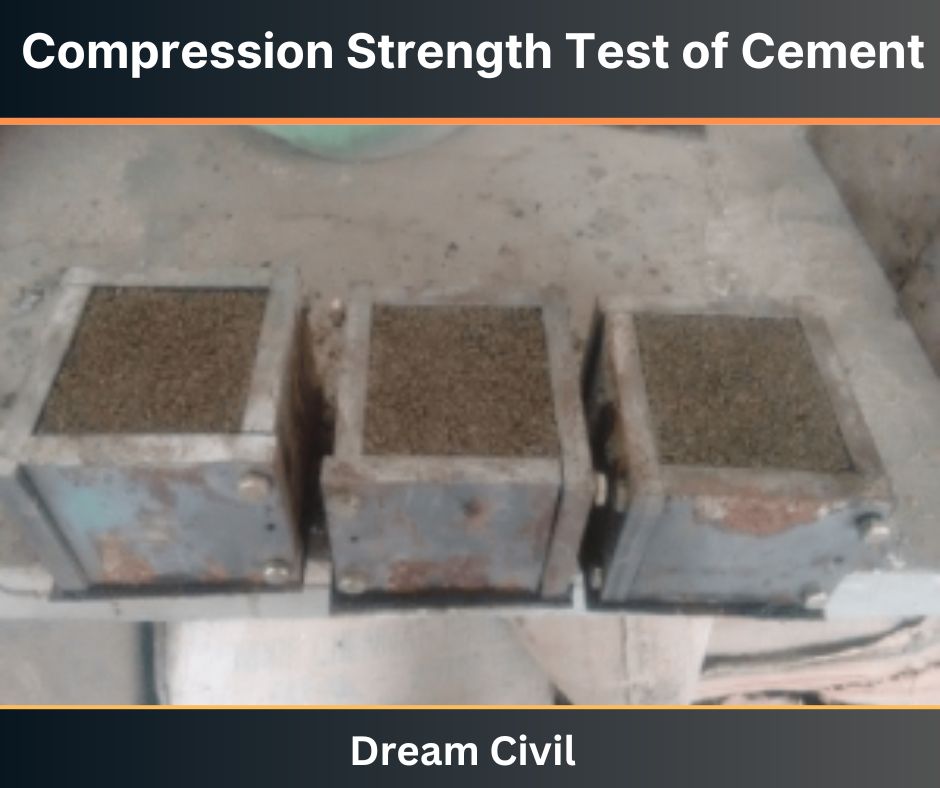Table of Contents
1. Objective
A compression strength test of cement is carried out to calculate the suitability of cement for developing the required compressive strength of concrete and mortar.
2. Compression Strength Test of Cement
This test is done on 1:3 cement mortar cubes prepared by gauging 185g of cement 555g of standard sand and 74g of water.
As per Indian standard specification, the average compressive strength for three cubes should not be less than 11.5 N/m2 and 17.5 N/m2 after 2 days and 7 days respectively.
3. Field Tests for Cement
In order to find out the quality of cement roughly, the following four field tests are done:
1. Color:
The color of the cement should be uniformly greenish-grey.
2. Physical properties
1. It should feel smooth when it is rubbed in between fingers. If it feels rough, it denotes adulteration with sand.
If the cement includes more powder clay and silt as an adulterant, the cement paste will give an earthy smell.
2. When the hand is thrust into a bag of cement it should feel cool and not warm.
3. A handful of cement thrown into a bucket of water should float in case the cement is of good quality and it sinks if it contains some impurities.
3. Presence of lumps:
Any lumps available in the cement bag should be powdered fine by pressing between the thumb and the forefinger.
If it doesn’t turn into powder form, the cement is considered to be spoiled by air sitting and should be rejected.

4. Strength:
The strength of cement can be determined/ascertained in the following ways:
1. A thick paste of cement with water is made and kept on a piece of thick glass and is kept underwater for 24 hours; the paste should be dried and not cracked.
2. The briquettes (75 mm x 25 mm x 12 mm) are prepared with a lean or weak mortar (1: 6) and are immersed in water for 3 days.
If the cement is of good quality, these briquettes will not break down into pieces easily. It also will be very much difficult to change them into powder form.
3. A cement block having 25 mm x 25 mm x 200 mm (length) is made and immersed in water for 7 days.
The block should not reflect signs of Failure when kept on supports 150 mm apart and loaded with a load of 340 N.
4. Result
As per Indian standard specification, the average compressive strength for three cubes should not be less than 11.5 N/m2 and 17.5 N/m2 after 2 days and 7 days respectively.
This was for the Compression Strength Test of Cement.
5. References1. Content Filter & Authenticity Checking Team, Dream Civil International (Our team checks every content & detail to maintain quality.) |
| Read More: Cement Plaster |

